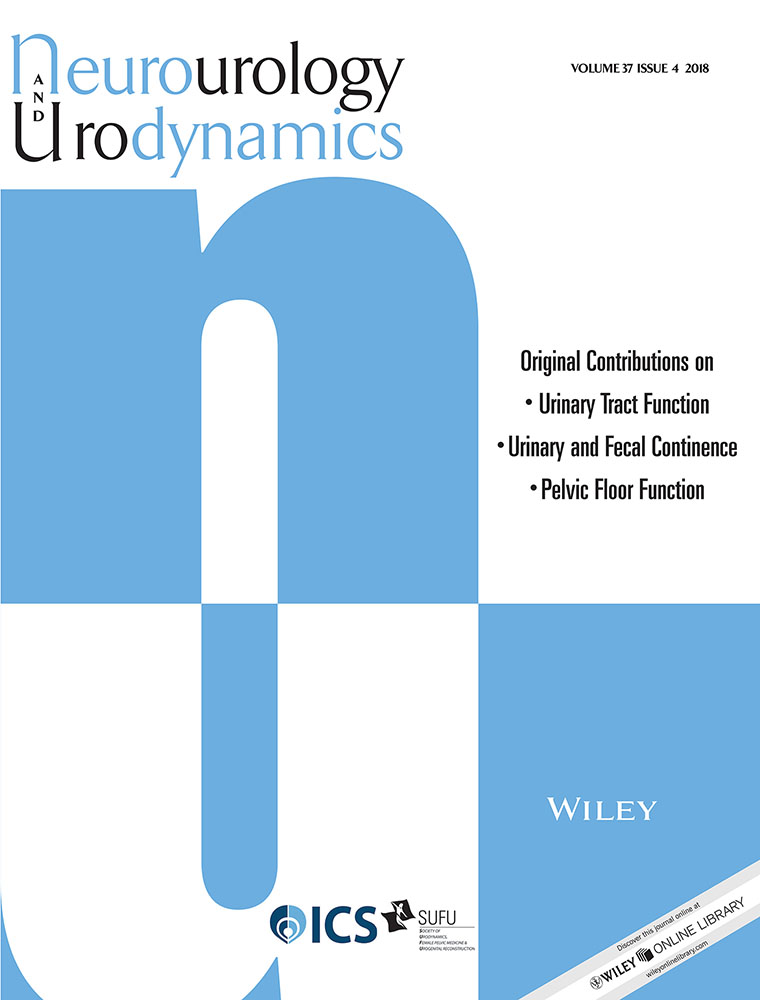High luteinizing hormone weakens urinary continence mechanisms in association with prostaglandin E2 elevation in a postmenopausal rat model
Abstract
Aims
To explore the role of luteinizing hormone (LH) in the urinary continence mechanism, urethral function was investigated using a postmenopausal rat model with high serum LH concentrations and the postmenopausal rat model given a gonadotropin releasing hormone (GnRH) antagonist to lower LH concentrations.
Methods
Adult female rats were divided into: 1) sham group; 2) ovariectomy group (OVX) with removal of bilateral ovaries; 3) OVX and GnRH-antagonist administered group (OVX + G); and 4) sham and GnRH-antagonist administered group (Sham + G). Urethral function was evaluated by the sneeze-induced urethral continence reflex experiment, and serum LH and prostaglandin E2 (PGE2) concentrations were measured.
Results
In the sneeze-induced urethral continence reflex experiment, urethral baseline pressure (UBP) and the amplitude of the urethral response during sneezing (A-URS) were measured. The UBP was significantly decreased in the OVX group than in the other groups. A-URS was significantly lower in the OVX group than in the Sham group, but with no significant difference compared with the OVX + G group. Lowering the serum LH by a GnRH-antagonist improved UBP to the same level as in the Sham group. The serum PGE2 concentration was significantly higher in the OVX group than in the other groups.
Conclusions
The results suggested that the increased serum LH concentration in the OVX rat model worsened the continence mechanism. This mechanism is probably associated with an increased PGE2 concentration, because PGE2 caused urethral smooth muscle relaxation. A GnRH-antagonist might improve urinary incontinence by decreasing the serum LH and PGE2 concentrations.




